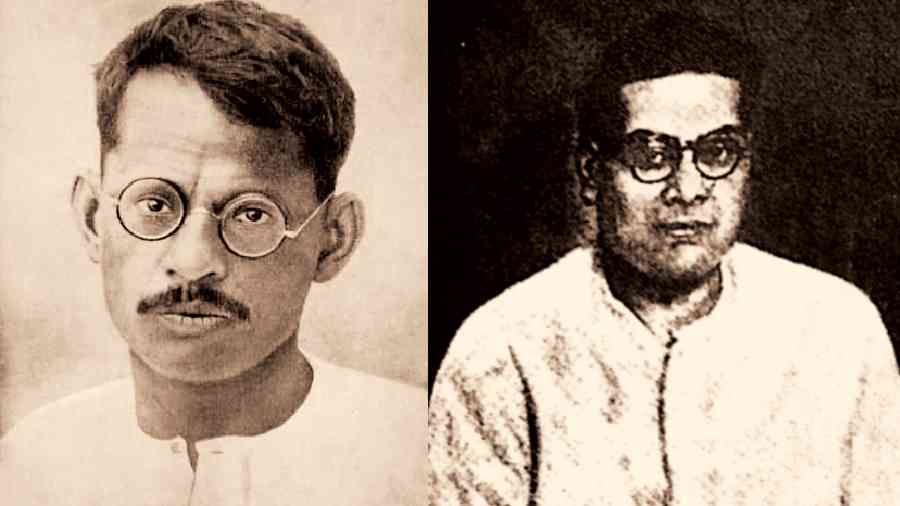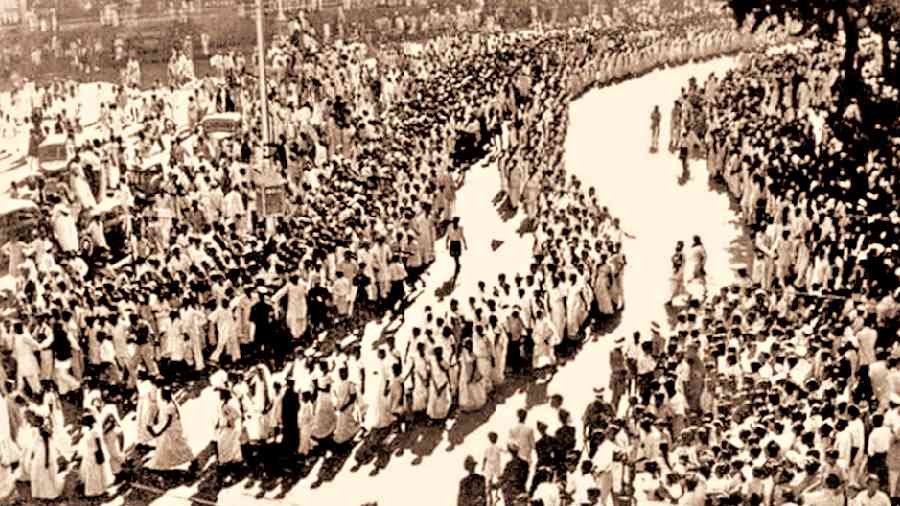This year, the 75th anniversary year of India’s independence, is also the 80th year of ‘Quit India’ — the struggle launched in 1942 which became the last mass movement for the termination of British rule in India.
Five years older than Free India, the India of Quit India was geopolitically undivided, emotionally self-confident, and capable of sacrifice, of suffering in its very confidence.
But that India of Quit India was about more than a challenge to the British raj, more than a proclamation of India’s readiness and ability to participate in the war effort as an equal partner of the Allies, something which neither London nor Delhi was willing to recognise. That India was about a unifying wholeness. It was about a unity of resolves and, therefore, of action in and for that unity, that wholeness.
In his iconic address at the ‘monster’ meeting at Gowalia Tank in Bombay on August 8, 1942 at which the Quit India resolution was passed, Gandhi spoke of “the coming revolution” that would throw colonialism and imperialism off the nation’s back. But he devoted as much if not more time in his address to ‘India’ than to Britain’s rule over India. The Hindu-Muslim impasse and the call for Partition were on his mind. Saying the Congress did not belong to any one class or community but to the whole nation, he spoke of a future where Muslims and Hindus would be protected against attacks by one on the other by Congressmen who would sacrifice their lives in the process.
Gandhi had in mind a clear concept — a united India — but he also had in mind clear examples of those who strove and died in the striving for a non-sectarian, non-communal, non-distrusting India.
On this double anniversary — the 80th of Quit India and the 75th of Free India — those who believe that the different communities who make up the peoplehood of India are equal and equally bound by duties and empowered by rights must celebrate the bravehearts who died for that unity, for that equality. The Greats of the struggle for freedom are being commemorated. But the no-less Greats of the struggle for harmony deserve no less. Their sacrifices are for real. Their names bear wounds and their memories scars. These demand our attention. But more, our solidarity.
Of these, one person towers: Ganesh Shankar Vidyarthi (1890- 1931), founder-editor of the Hindi nationalist journal, Pratap. In February 1927, in Kanpur, after a Muslim mob had attacked a musical band accompanying a marriage procession, Vidyarthi, known for his secular views and empathy for the Muslim minority community’s concerns, nevertheless chose to stage a demonstration at the Moolganj mosque, playing music for forty minutes; this was in retaliation to a Muslim mob attacking a musical band accompanying a Hindu marriage procession.
In 1931, when Kanpur faced communal rioting, Vidyarthi chose to skip attending the Karachi Congress Session, stay back, and rescue innocent people of both communities; his daughter “stated that her father had successfully rescued some Muslim women, then immediately got involved in rescuing some trapped Hindus” before he got attacked and killed. Ganesh Shankar was 41.

Ganesh Shankar Vidyarthi and (right) Sachindranath Mitra
Gujarat gave another immortal example of what may be termed heroic deaths for harmony. On July 1, 1946, an annual rath yatra was to take place, starting from the Jagannath Temple in Jamalpur, Ahmedabad. Tension rose around the procession and violence followed between the two communities. Two friends, Vasantrao Hegishte and Rajab Ali Lakhani, “staved off... rioters, the former protecting Muslims and the latter saving Hindus, and both losing their lives”. They had refused to leave when threatened by diehards, paying for their perseverance with their lives. Vasantrao had studied in Gujarat Vidyapith, the national school founded by Gandhi, and had participated in the Dandi march, serving a jail term as a result. Lakhani, born in Karachi, had made friends with Vasantrao, calling himself a ‘Hindustani’. Vasantrao was 40, Rajab, 27.
In the course of his tour of riot-affected Bihar, Gandhi was at a Congress gathering at Bir, Bihar, on March 19, 1947. He said: “Is it or isn’t it a fact that quite a large number of Congressmen took part in the disturbances? I ask this question because people are making this allegation. But the Congressmen assembled here can themselves tell the truth. How many of the 132 members of your Committee were involved? It would be a very great thing if all of you assert that none of you was involved. But this assertion cannot be made... I wish to ask you, how could you live to see an old woman of 110 years being butchered before your eyes? How could you tolerate it?” Gandhi was speaking in Hindustani. The original, which is a hundred times more powerful, has a line which the translation has skipped. Gandhi asked the Congressmen, “Mein apse puchhna chahta hun… Ap zinda kyun rahe (I want to ask you… how could you watch all this and remain alive?)?”
Sachin Mitra, 38 years old, an MA from Calcutta University, was a lover of khadi and trained in satyagraha in Noakhali. On September 1, 1947, he heard of a conflagration in the city and set out with a few Muslim friends in the direction of Nakhoda mosque. Pyarelal writes in Mahatma Gandhi: The Last Phase: “At the crossing of the Chitpur Road and Canning Street, the party was surrounded by a hostile Muslim crowd. The Muslim rowdies separated Sachin and his Hindu colleagues from their Muslim comrades. Sachin was stabbed and his Hindu colleagues severely assaulted. Their Muslim comrades tried to protect them but were overpowered, some of them sustained injuries. Sachin was removed to a hospital where he succumbed to his wounds.” Smritish Banerjea, of about the same age, learnt that a peace mission of boys and girls was in danger. He rushed to the spot and when the procession was attacked, was seen with a bloodstained shirt trying to escort some girls to safety. His body was later brought to a hospital with five mortal stab wounds.
In the Pakistan-orchestrated raid of Kashmir by so-called tribals, Brigadier Usman of the Indian Army fell — I should say ‘rose’ — fighting. And a young leader of the National Conference in Baramulla, Mir Maqbool Sherwani, played a role that stands apart. Captured by the raiders, he was asked to swear allegiance to Azad Kashmir. He refused and, in fact, told his captors that Indian troops would soon be in Baramulla. Fourteen bullets completed what cunningly-devised torture had begun on his body. “This was a martyrdom,” Gandhi said, “of which anyone — Hindu, Sikh, Muslim or any other would be proud.”
On this double anniversary, seventy-five salutes and eighty genuflections to these heroes and — not to forget — to the heroic women in their bereaved families. Thinking of them how small our pre-occupations seem and how blind to the lethal dangers that incubate in disharmony.
Netaji Subhas Chandra Bose had observed and applauded Quit India in August 1942. He was not there to see Free India in 1947. But his beckoning hand points to the motto he gave to his Indian National Army: Etihaad (unity), Etmad (faith) and Kurbani (sacrifice) — for the greatness of a Hindustan which is now our India that is Bharat.










